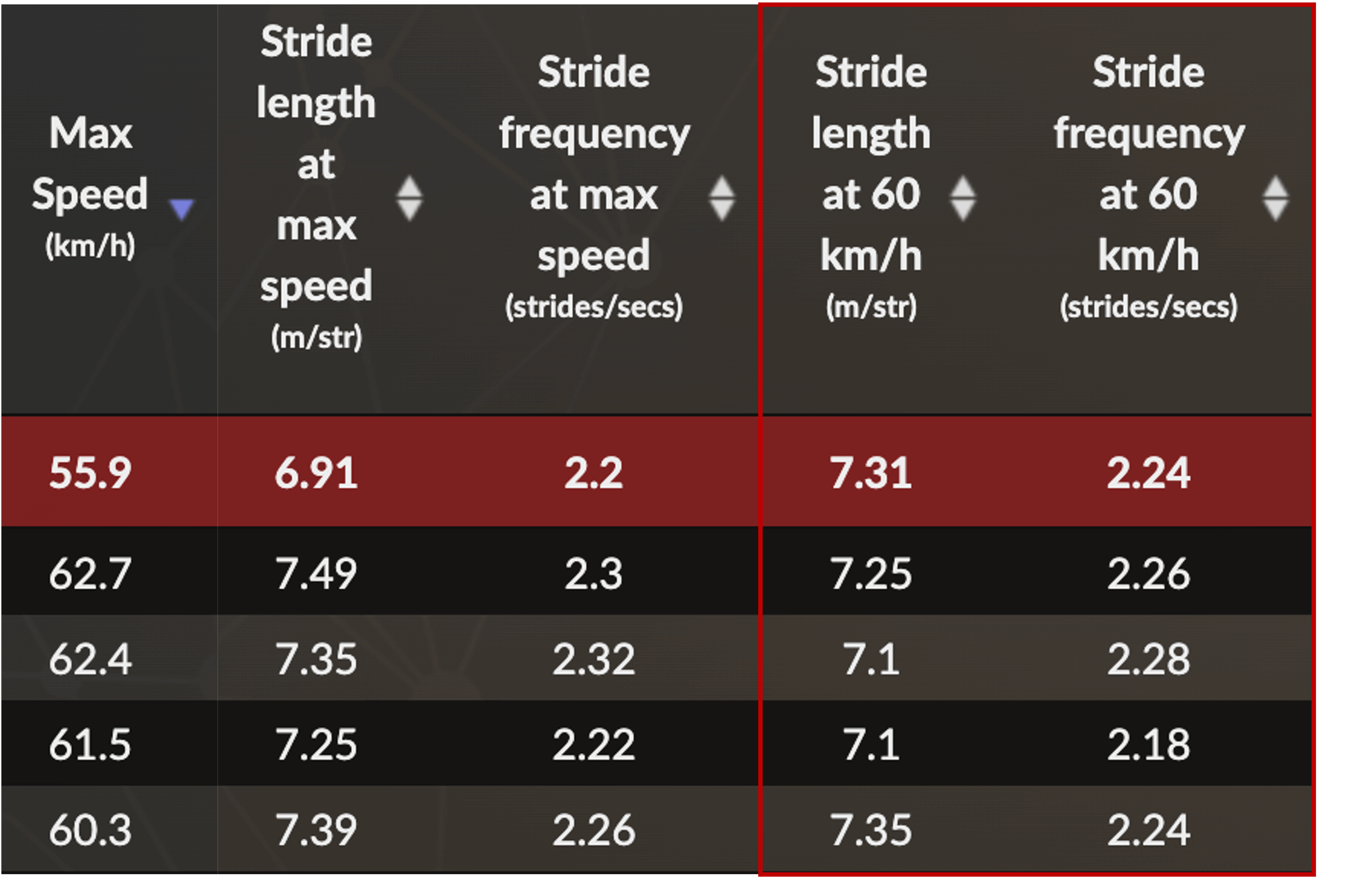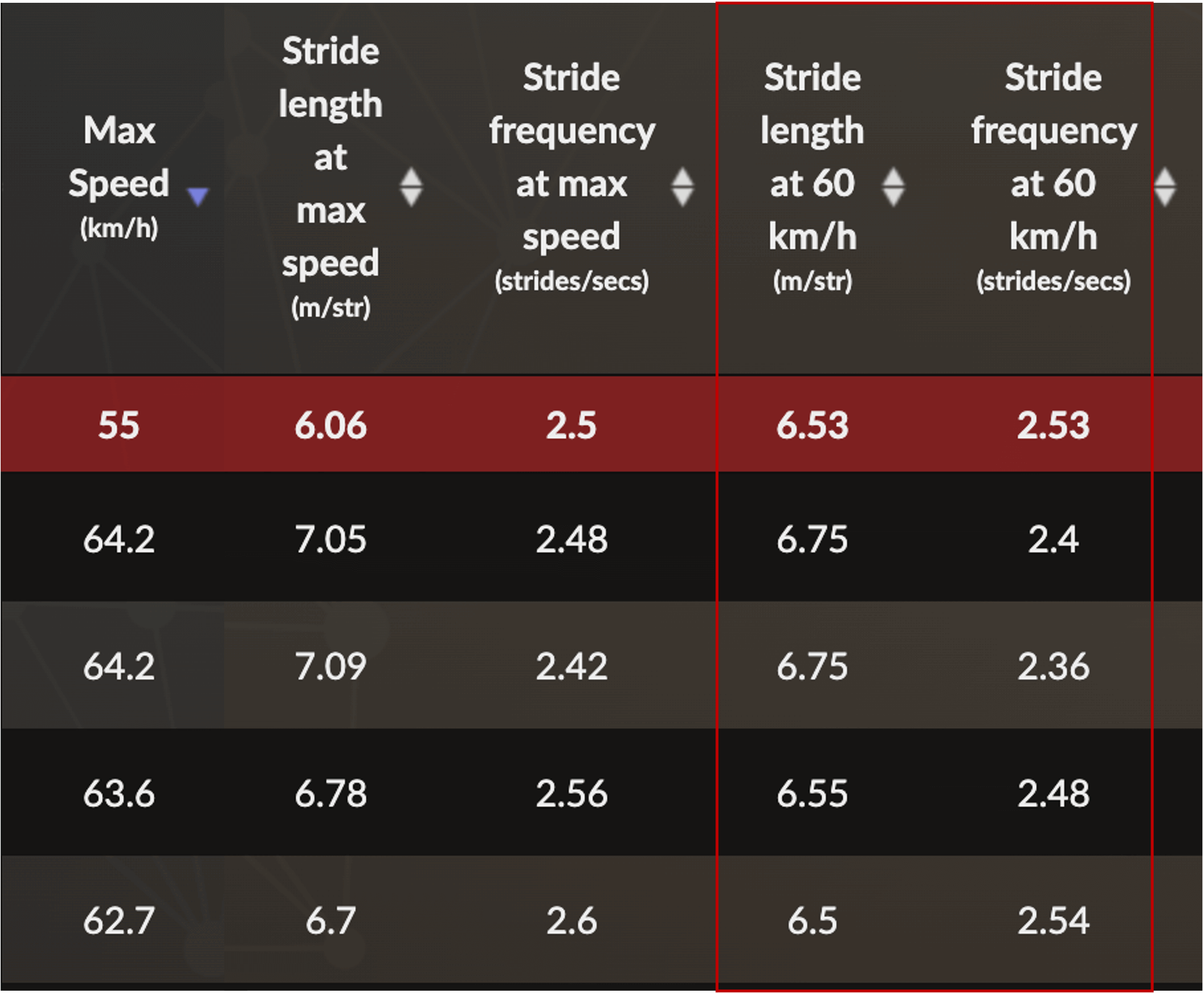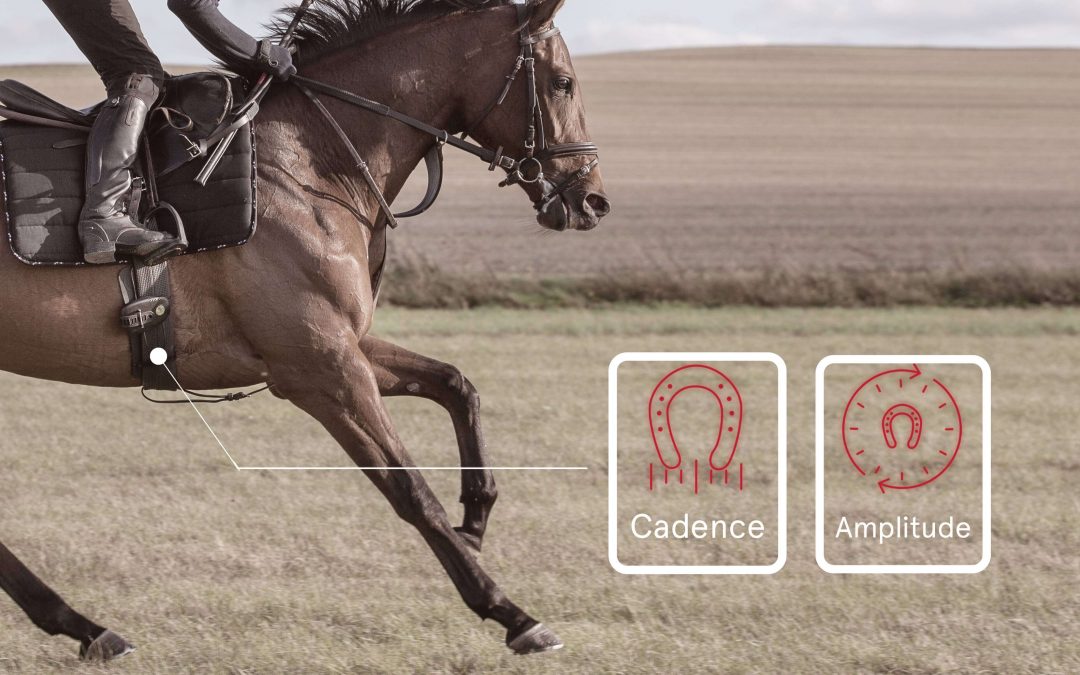Assessing the preferred distance of a racehorse plays a major role in his performance.
Speed is the essential element to be analyzed to follow the training of a racehorse. But when we think about speed, what first comes to mind are reference times, timings and mileage reductions. But the key to speed is played out on another level: speed comes from the horse’s stride. Indeed, speed is a calculation of the number of meters covered per second: a horse’s speed is therefore the length of its stride in meters (the stride length), multiplied by the number of strides per second (the stride frequency).
The unique mechanism with which each horse forms its stride determines its speed, its acceleration strategy and influences its ability to handle speed. Knowing more about a horse’s locomotor profile enables one’s opinions and feelings to be supported by objective data that provide information on the horse’s preferred distances.
The data can thus provide trainers with a decision-making aid when they are competing.
How to analyze the locomotor profile of a horse thanks to its stride length and stride frequency data? What is the link between a horse’s locomotor profile and its preferred distance?
Analyse your racehorses’ locomotor profile to identify their preferred distance
To better understand the locomotor profile of a horse, the analysis has to be based on the study of stride length and stride frequency.
The stride length of a horse is the length of its stride at trot and canter. This increases with speed, so it is interesting to study its evolution during training in parallel with speed. Osseous blockages or muscular discomforts can hinder the horse’s stride length. Thus, anomalies in the evolution of the stride length can be a sign of pathologies. For example, in case of abnormally low stride lengths compared to the usual training, it may be wise to ask for a veterinary or osteopathic opinion.
The stride frequency is the number of strides the horse makes in one second. Like the stride length, it varies with speed.

It may be useful to use comparison tools to compare the following indicators for rate and stride length :
- Maximum: the record for stride length and stride frequency during training.
- At 60 km/h: this indicator allows comparison of locomotor parameters for the same speed, making the comparison more relevant. It can be obtained by hand on the replay page of the training or in the Analytics part of the Equimetre platform. Indeed, for each training, an algorithm calculates the stride length and stride frequency at 60 km/h, even when this speed has not been reached (in this case, the algorithm gives what the stride length and stride frequency of the horse would have been if it had reached 60 km/h).
Theoretical locomotor profiles
Stride frequency and stride length very often increase to the detriment of the other. Indeed, just like for humans, if the stride becomes longer it will logically be more difficult to sustain a high pace. Similarly, when one wishes to accelerate the pace of his strides, it becomes difficult to maintain a long stride. This is not an absolute rule, but the same is true for racehorses. Furthermore, the pace is often directly correlated with stamina: a high pace is difficult to sustain over a long period of time and will therefore hinder high stamina.
As each horse has its own style of stride, generic and theoretical profiles can be distinguished.

-
Milers & Stayers – long distances
As the length of the race increases, so does the stamina. So a low pace will allow you to focus on stamina and stride length. Since speed is achieved through a longer stride, horses with locomotor skills for longer distances are distinguished by a high stride length and a low stride frequency that allows them to hold the length.

Data from the Equimetre platform
On average, this horse has a stride length at 60km/h of 7.31m, and a stride frequency at 60km/h of 2.24 strides per second. So theoretically he has the profile of a stayer/miler.
-
Sprinter – Short distances
To reach a high speed quickly, a high stride frequency can be an advantage. Indeed, a high stride frequency makes it possible to reach maximum speed faster than a long but short-paced stride. On the other hand, high stride frequency will not be sustainable as long as a large and less frequent stride. Improving the quality of recovery and fitness of the horse will ensure that the horse can hold this high pace longer than other horses and thus win the sprint.

Data from the Equimetre platform
On average, this horse has a stride length at 60km/h of 6,53 m, and a stride frequency at 60km/h of 2.53 strides per second. So theoretically he has the profile of a sprinter.
It is rare to encounter horses with both remarkable stride length and stride frequency, such horses are truly out of the ordinary and are horses with unusual speed profiles. In a nutshell, the theory says that a high stride length associated with a less remarkable stride frequency corresponds to the locomotor profile of a miler or stayer. On the contrary, a profile associating a very high stride frequency with a less remarkable stride length corresponds rather to a sprinter. As always, it is relevant to bear in mind that horses are living beings and high-level athletes, so these rules on the couple stride frequency/stride length are not an exact science but give useful points of reference.
Furthermore, since galloping respiratory rate is related to stride frequency, cardiopulmonary capacity is closely linked to performance and locomotor profile. A horse with a very fast stride frequency will have a very short inhalation-expiration cycle, at very high speed, apnea can almost be reached, if the horses are not prepared.
Musculature also plays a major role in locomotion. Powerful muscles offer greater acceleration capabilities, therefore rather conducive to sprinters.
How to choose the reference training?
The exercise to be used for comparison can be a speed workout, even over a short distance. For example, you can do a workout in progress followed by a frank acceleration over 600m.
Always make sure to always compare what can be compared (type of soil, quality of the terrain, weather, etc.).
In order to provide objective arguments to the trainer in his decision-making process on the distance to be engaged, it is possible to compare a reference training of the horse on which the decision is based with those of other horses. For example, if you know the preferred distance of a horse that has already shown good results in races, you can use a reference training of this horse in your comparison work, in order to place the couple stride length/stride frequency of your horse in relation to that of your reference horse.
Thus the stride length/stride frequency couple constitutes the locomotor profile of each horse. Understanding and using it can help the trainer: objective and quantified parameters can support his decision as to the distance to engage.
Keywords: locomotor profile, horse racing, entering a racehorse, locomotion, stride data analysis, stride length, stride frequency, sprinters, miler, stayer

